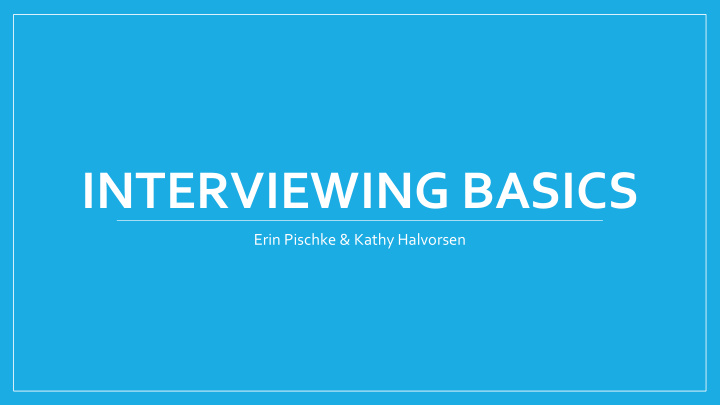



INTERVIEWING BASICS Erin Pischke & Kathy Halvorsen
Overview 1. Creating interview questions 2. Interviewing skills 3. Qualitative data analysis
Creating Interview Questions • 1. Consider the number of • 5. No jargon! questions to ask (length, • 6. Include instructions within the time) protocol (e.g. skipped questions) • 2. Open-ended questions • 7. Group the questions by topic and section • 3. Closed-ended questions & follow-up • 8. Add demographic questions (beginning vs. end) • 4. No double-barreled questions • 9. Always think about your research question!
Interviewing Skills • 1. Break the Ice • 6. Be a good listener • 2. Set the Stage • 7. Probe! • 3. Ask your Questions • 8. Act like Homer Simpson • 4. Use clear, basic • 9. Answer questions & say thanks language • 5. Address all questions and topics
Qualitative Data Analysis • Review notes from the interviews (or, in real life, transcribing the audio recordings) • Group members should each read through the findings on their own to identify themes or patterns that emerge across the data. • For example, look for common topics that interviewees discuss, such as importance of water or how a community manages their parks.
Qualitative Data Analysis • Group members should compare their list of themes to verify that the themes relate to the data and come to agreement over which themes to use. • Continue reading and re-reading the interview data to allow more themes or sub-themes to emerge; this is called coding the data. • Look for exemplary quotations to use to illustrate the themes.
Questions?
Recommend
More recommend